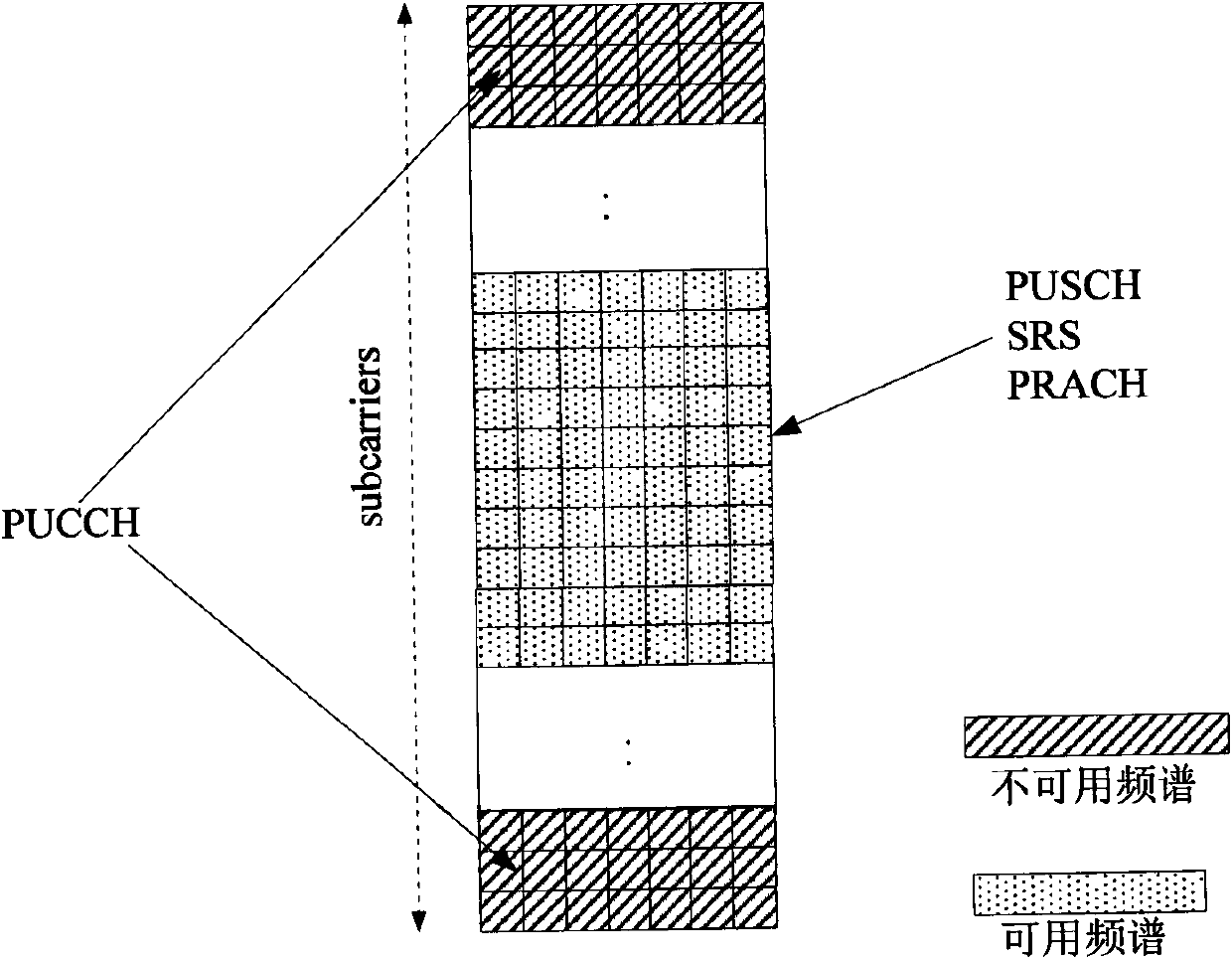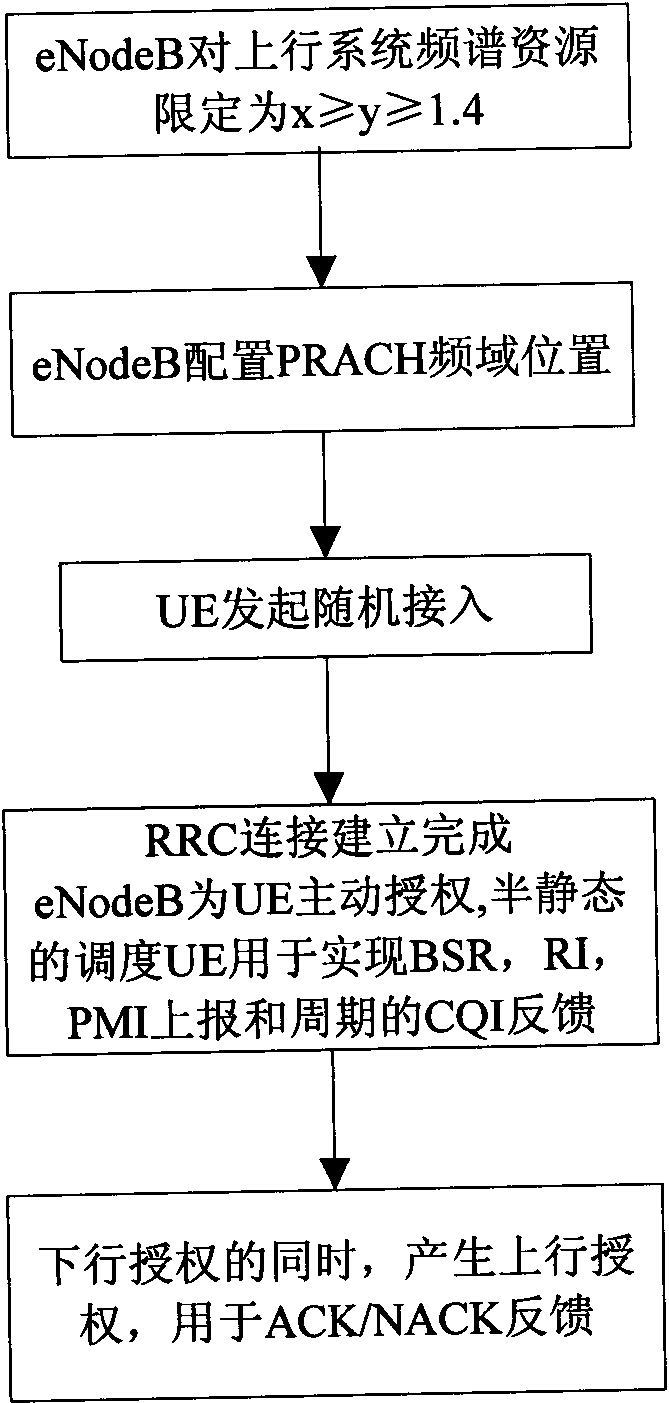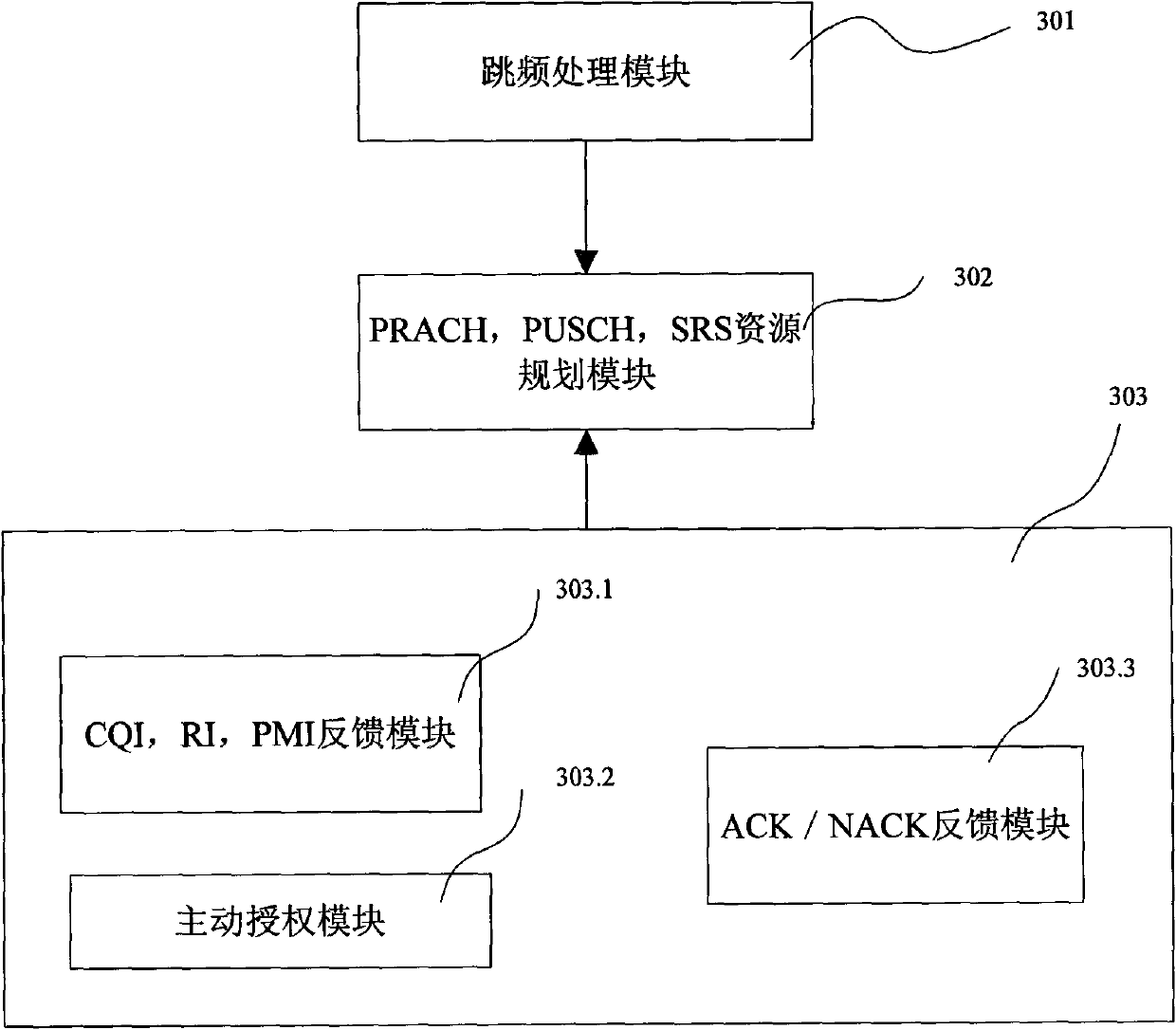Method and device for implementing bandwidth-asymmetrical system
An asymmetric and bandwidth technology, applied in transmission systems, digital transmission systems, connection management, etc., can solve the problems of waste of wireless spectrum resources, waste of uplink spectrum resources, waste of wireless resource use costs, etc., to reduce processing capacity and save hardware. Cost, flexible use of effects
- Summary
- Abstract
- Description
- Claims
- Application Information
AI Technical Summary
Problems solved by technology
Method used
Image
Examples
Embodiment 2
[0038] Introduce in detail with embodiment two again:
[0039] It is assumed that the LTE FDD system has a system bandwidth of 20 MHz, and 100 RBs (Resource Blocks) are denoted as: RB0, RB1, RB2, . . . , RB99. Limit the uplink to only use 70 RBs between RB21, RB22,..., RB90; give the specific implementation process;
[0040] Step 1, the eNodeB restricts the available spectrum resources of the uplink system to RBs between RB21-RB90;
[0041] Step 2: The eNodeB configures PRACH spectrum resources between RB21-RB90. In this embodiment, the PRACH spectrum resources are configured as RB41, RB42, ..., RB46;
[0042] Step 3, the UE initiates random access within the PRACH spectrum specified by the eNodeB;
[0043] Step 4, the random access is completed, the RRC link is successfully established, the periodic CQI feedback service of the UE is scheduled semi-persistently, the SRS transmission bandwidth is configured in the range of RB21-RB90, and the PUSCH frequency hopping mode is de...
PUM
 Login to View More
Login to View More Abstract
Description
Claims
Application Information
 Login to View More
Login to View More - R&D
- Intellectual Property
- Life Sciences
- Materials
- Tech Scout
- Unparalleled Data Quality
- Higher Quality Content
- 60% Fewer Hallucinations
Browse by: Latest US Patents, China's latest patents, Technical Efficacy Thesaurus, Application Domain, Technology Topic, Popular Technical Reports.
© 2025 PatSnap. All rights reserved.Legal|Privacy policy|Modern Slavery Act Transparency Statement|Sitemap|About US| Contact US: help@patsnap.com



